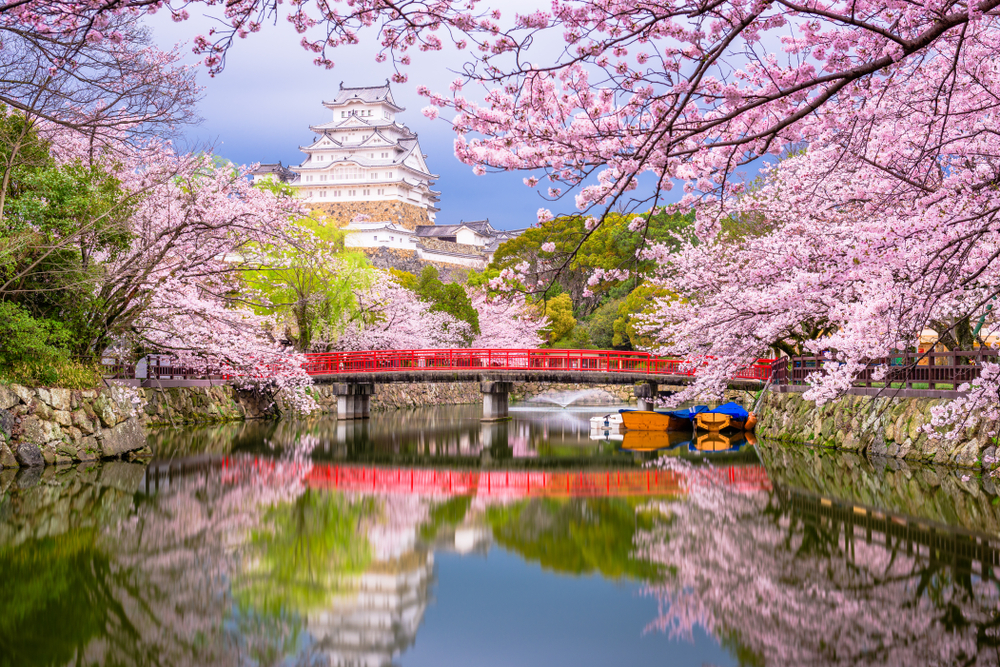
As the captivating beauty of Japan’s Sakura (cherry blossom) season comes to an end this year, Visa, a global leader in payments, revealed data demonstrating the vast impact of the Sakura bloom on Japan’s economy. The data, which delves into the spending patterns and travel behaviours of visitors during this cultural phenomenon, unveiled a 50 percent increase in overall inbound tourism spend, fuelled by an increase of 43 percent in number of transactions recorded.2
Blooming Business: Unveiling the Economic Impact
An increase in tourism due to the Sakura bloom led to a surge in payment volumes across the country, with spending peak days moving from southern Japan northward, coinciding with timings of the peak blooms. This underscores the allure of the Sakura season, enticing visitors to follow its path across the country.
Prefectures known for its cultural immersion and nature-oriented tourism such as Kyoto, Nara, Ishikawa, and Yamanashi reported a two-fold increase in weekly inbound visitor flow during the peak Sakura week. This significantly outgrew Japan’s metropolitan hubs, Tokyo, and Osaka, which saw a strong but more conservative increase of 60 to 70 percent of weekly travellers during the Sakura season.
Those visiting prefectures known for nature spent more than 20 percent of their budget on accommodation, with travellers preferring to dine at their hotels or a ryokan (traditional Japanese inn) to experience a more authentic, relaxed stay. Visitors to Tokyo and Osaka spent more than 50 percent of their budgets on shopping and dining, experiencing some of the most lauded culinary delights and shopping spots that Japan is known for.
Responding to these insights, Makita Hiroki, General Manager of the Marketing Strategy Department for the Osaka Convention & Tourism Bureau said, “We believe in the unifying power of the Sakura season to bring people world-over together. These Visa insights are powerful and allow us to properly plan for the arrival of global visitors for the Osaka expo next spring.”
Beyond Arrival Numbers: Understanding Visitor Preferences
The data also revealed that travellers from Southeast Asia and East Asia, in particular Singapore, Indonesia, and Hong Kong, were top spenders during the season. These travellers also reportedly enjoyed last-minute shopping sprees, with 60 percent of their expenses spent shopping on the very last day of travel, purchasing souvenirs, gifts or to take advantage of the duty-free shopping draw.
The Philippines led the region with the highest growth rate of 66 percent in terms of total payment volumes. Vietnam, on the other hand, registered the highest uplift of 22 percent in terms of spend per card, particularly at department stores, pharmacies, high-end and jewellery stores. They were joined at the jewellery stores by tourists from East Asia, who spent an additional eight percent.
Spending patterns are also disparate depending on the income level of travellers. The data revealed that high-net-worth travellers allocate approximately 20 to 30 percent of their spending towards accommodation during their Sakura journey and subsequently shift toward shopping experiences on the latter half of the trip. In contrast, budget travellers exhibit a more fluid spending pattern that focused on dining and shopping experiences.
Embrace the Future: Contactless Payments in Bloom
Travellers are embracing contactless payments, with overall usage increasing by 14 percent from the start of the Sakura season to the end. This illustrates an increasing demand for frictionless payment solutions during travel, as more visitors discover they can pay by contactless at points of purchase. The overarching growth in contactless payments is largely driven by its adoption in core sectors like restaurants and grocery shops, indicating these areas as pivotal drivers leading the charge in the expansion of contactless payment penetration.
Visitors from countries with medium and high contactless maturity swiftly adopted this payment method from day one. However, travellers from countries with lower contactless maturity displayed a plateau in contactless usage after the fourth day, likely due to typical shorter trip durations.
Beyond the Bloom: Data-Driven Decisions for a Thriving Tourism Industry
TR Ramachandran, Senior Vice President, Head of Products and Services, Asia Pacific, Visa, said: “The power of data lies in its ability to transform raw numbers into meaningful insights, driving informed decision-making, and strategic planning. Our analysis of the Sakura bloom’s impact on tourism and spending patterns highlights how data can help us better understand complex phenomena, identify trends, and make predictions. In this case, the data has not only provided us with insights into tourist behaviour and spending patterns but also enabled us to identify opportunities for service improvement and targeted marketing at a specific demographic and prefecture level.”
“Visa’s data unlocks more than just current trends. Solutions such as the Visa Destination Insights can empower players in the tourism industry as well as local merchants to predict future behaviours and inform strategic planning. By analysing the impact of the Sakura season, Visa equips businesses large and small, with valuable insights to optimise their offerings and deliver a seamless travel experience for visitors.”
The data leverages anonymised aggregate transaction data of spending patterns across 17 prefectures across the Sakura bloom. Visa Destination Insights and Visa’s consulting and analytics capabilities can provide clients with key insights to help them thrive in the current business environment.

